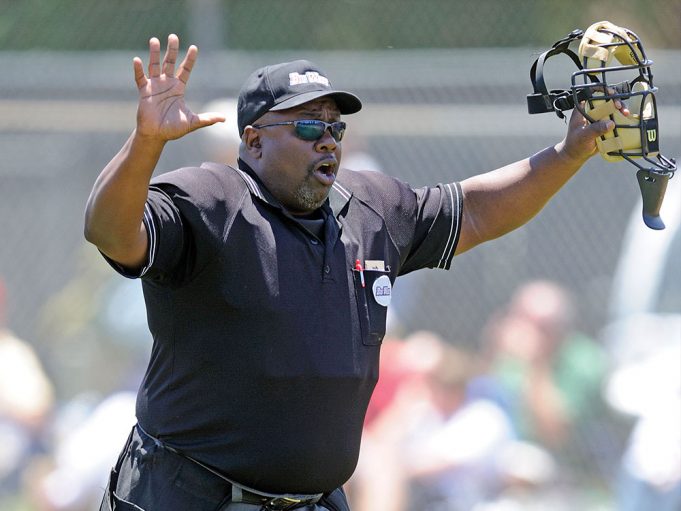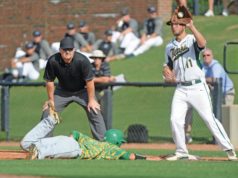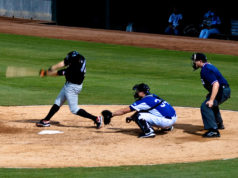Determining whether a batter was hit by a pitch can sometimes be a challenge for the plate umpire. Sometimes an umpire will have to rely solely on circumstantial evidence. Here are some of the criteria and types of circumstantial evidence an umpire can use to handle those situations:
• The batter’s reaction.
If the batter grimaces in pain immediately after the ball passes him, there is a good chance he was hit. Most first reactions are honest, and you can safely send the batter down to first. Sure, once in a while a batter will try to fool you, but umpiring involves compromise.
• Sounds.
Sometimes you hear a sound as the ball passes the batter. If you hear a sound other than the ball hitting or nicking the catcher’s glove or the bat, the batter was probably hit.
• Location of the ball.
If you have a fastball down the middle of the batter’s box and you are in doubt as to whether or not the pitch got a piece of the batter, give the benefit of the doubt to the batter. Why? A pitched ball belongs around the plate, not over the middle of the batter’s box.
• A ball in the dirt.
A ball in the dirt can be a tough call because the plate umpire will be straight-lined more on that play than any other. Adding to the difficulty of the call will be the sound of the ball hitting the ground directly before it may or may not have hit the batter. If it looked like the batter was hit and he tried to move, he was probably hit.
What's Your Call? Leave a Comment:
Note: This article is archival in nature. Rules, interpretations, mechanics, philosophies and other information may or may not be correct for the current year.
This article is the copyright of ©Referee Enterprises, Inc., and may not be republished in whole or in part online, in print or in any capacity without expressed written permission from Referee. The article is made available for educational use by individuals.
















